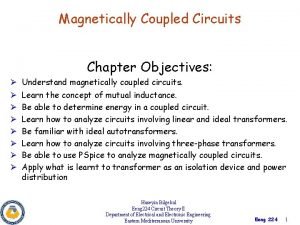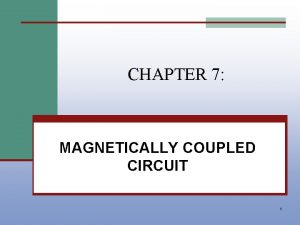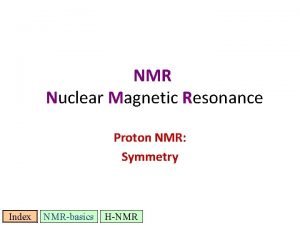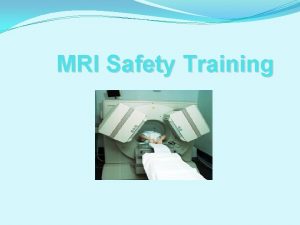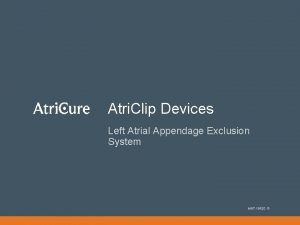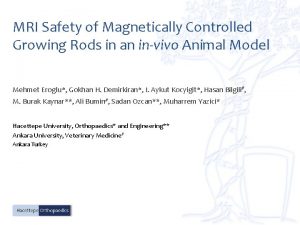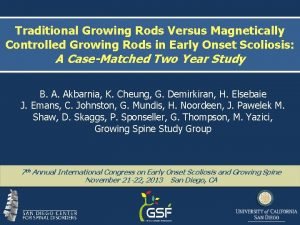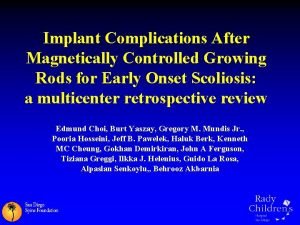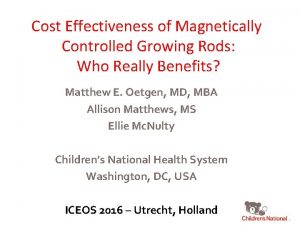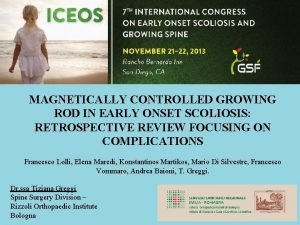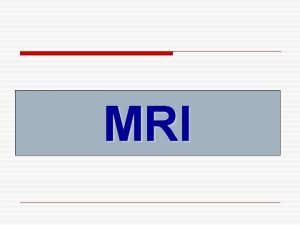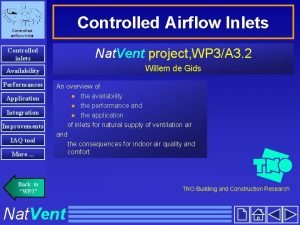MRI Safety of Magnetically Controlled Growing Rods in













- Slides: 13

MRI Safety of Magnetically Controlled Growing Rods in an in-vivo Animal Model Mehmet Eroglu*, Gokhan H. Demirkiran*, I. Aykut Kocyigit*, Hasan Bilgili#, M. Burak Kaynar**, Ali Bumin#, Sadan Ozcan**, Muharrem Yazici* Hacettepe University, Orthopaedics* and Engineering** Ankara University, Veterinary Medicine# Ankara Turkey

Introduction • Growth-friendly techniques for EOS • Long standing process • EOS population • Significant comorbidities • MRI investigation might be needed during the treatment period • Spine or non-spine related causes

MRI-MCGR • MRI-MCGR interaction • Unknown • Not suggested by manufacturer • Potential complications • Uncontrolled change in the length • Heating due to radiofrequency fields leading to tissue damage • Displacement of the rod due to torque occurring with the motion of a ferromagnetic material • Deactivation of magnet preventing further lengthening

Background • Budd et. al. , Eur Spine J 2016 • In-vitro study • Phantom model • 1. 5 T • Significant image distortion • No negative effect on the magnetic rod elongation mechanism

Purpose • To investigate • The interaction between MCGR and MRI • MRI compatibility of MCGR in an in vivo setting

Materials and Methods • 3 male Merino breed sheep • Pedicle screws @ both ends • T 6 -12 instrumentation • Submuscular placement of MCGR • Single rod in 2 and double rods in 1

Materials and Methods • Rod length was measured and recorded preoperatively • MRI compatible T 1 Neoptix Reflex fiberoptic temperature sensors • Attached over the magnets • Multilayered closure

Materials and Methods • Thoracic and lumbar MRI • 0. 3 T vertical field open MRI unit (Hitachi) • MR waves were applied 45 minutes • Temperature changes were recorded every 3 minutes • Neoptix reflex four-channel signal conditioner

Materials and Methods • Postoperatively • AP and lateral X-rays • After euthanasia • Implant removal • Length measurement • Checking integrity of elongation system by ERC

Results • No displacement in the positions of the MCGR • Length of MCGR • No change • Ability to elongate • It works

Results • Heating • Mean increase • 1. 45 o. C (0. 5 -2. 4)

Drawbacks • Animal model • Cannot extrapolated to humans • Size of scattering effect • Not measured • Acute setting • Long-term effects? • Weak magnet • With stronger magnets?

Conclusion • Lower magnet MRI is safe in an animal model with MCGR • NO • displacement of the rod • changes in their length • significant heating • adverse effect on the lengthening mechanism • BUT • Significant scattering effect on visualization of the surrounding tissues


